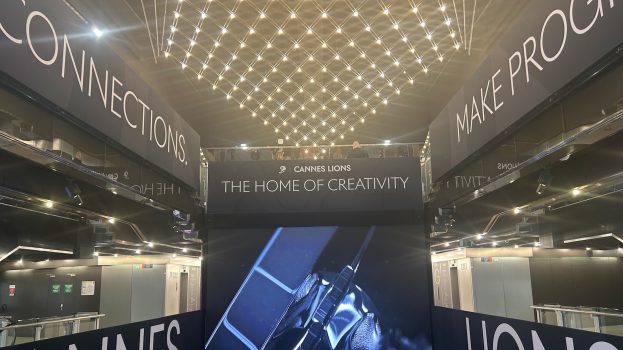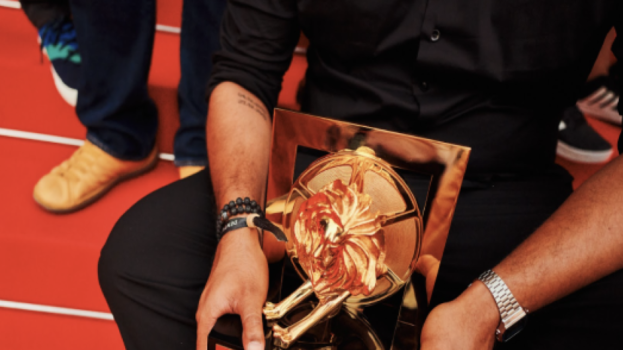This “Passion Project” originally appeared in the November/December 2019 issue of strategy.
By Will Novosedlik
Even though I am closer now to meeting my maker than I’ve ever been and starting to think about how my tombstone should read, there are no algorithms sending tombstone ads to any of my social feeds.
Mortality is not a subject that comes up too often in the world of advertising. That’s because, as Don Draper said in an early episode of Mad Men, advertising is about one thing and one thing only: happiness. So when a creative director fashions an artefact completely and lovingly obsessed with death, you sit up and take notice.
The creative director in question is Steve Mykolyn, former CCO of Taxi. Mykoyn’s creative drive needed more than what he could feed it at the office. So he always had a side project on the go, something that had nothing to do with commerce or clients. Something far more akin to art than to advertising.
In 1991 that hunger inspired him to begin a creative collaboration with photographers, printers, illustrators, musicians, filmmakers and writers on what can only be called a magnificent 30-year meditation on the subject of death. His first partner in this mortuary enterprise was photographer Russell Monk. They were both interested in the Mexican tradition of el Dia de los Muertos, or “Day of the Dead,” the annual festival in which families visit the graves of dead relatives to feast, sing, drink, dance and remember their dearly departed. Says Mykoyn: “This was 1991 so very few Canadians were aware of ‘Day of the Dead,’ whereas now, around Halloween, you can’t swing a dead cat without hitting a sugar skull.” So they grabbed some gear, bought plane tickets and off they went.
After an eight-hour drive from Acapulco (don’t ask), they arrived in the town of Patzcuaro, ground zero for el Dia. As morbid as it sounds, el Dia de Los Muertos is quite a happy occasion, reflecting a culture that, unlike ours, considers death to be a natural part of life. They documented the events with photos, then came back to Toronto and within three months they had mounted an exhibit and created a 48-page photo book about the experience, complete with excerpts from Mexican poet Octavio Paz’ Labyrinth of Solitude.
But that was not enough. In 1998, Mykolyn returned to Patzcuaro with a film crew. And what a crew it was. His DOP was Chris Soos, who had shot Marilyn Manson and David Bowie videos with Floria Sigismondi and the Madonna BMW film directed by Guy Ritchie. He had cinematographer Ray Dumas as AD, who worked on award-winning videos for Our Lady Peace and Zero Vodka. And he had editor Mark Hajek on board, a veteran of Partners and Stealing Time.
“I had no clue what I was doing.” Mykoyn explains that “It’s less a documentary and what I would call a ‘concoct-umentary’ in that it was shot with all sorts of different film stock, some black and white, some colour, which I got from a friend, Richard D’Alessio. I went to him and said, ‘I need some film but I have no money,’ and he said, ‘You can have everything that’s in that fridge over there’ and it was all ends of different film stocks.”
 Other collaborators included illustrator Gary Clement, who did a poster and Neil Stewart of Anstey Bookbinding, with whom Mykoyn had worked on the original 1991 photo project. And last but not least, Mykoyn enlisted the help of long-time friend Mario Pietrangeli to compose a soundtrack, a unique cross between surf and spaghetti western music which Mykolyn dubs ‘surf-ghetti’. The film was featured at Hot Docs, Toronto’s Royal Cinema, HBO Latin America, and closed out Hispanic Month at the Smithsonian Museum.
Other collaborators included illustrator Gary Clement, who did a poster and Neil Stewart of Anstey Bookbinding, with whom Mykoyn had worked on the original 1991 photo project. And last but not least, Mykoyn enlisted the help of long-time friend Mario Pietrangeli to compose a soundtrack, a unique cross between surf and spaghetti western music which Mykolyn dubs ‘surf-ghetti’. The film was featured at Hot Docs, Toronto’s Royal Cinema, HBO Latin America, and closed out Hispanic Month at the Smithsonian Museum.
But the meditation was not over. The year 2017 saw the loss of some of the world’s greatest musical artists: Leonard Cohen, David Bowie, Leon Russell and Prince. “It put me in a state of shock,” recounts Mykolyn. Los Muertos was suddenly on his mind again.
Thus began the process of reviving the el Dia soundtrack from the ‘90s, combining it with music from all of his favourite musicians, and packaging it in a sleeve that would be a kind of advent calendar of artists that he had always admired – some dead, some alive.
There would be both a living and a posthumous portrait of each of the 48 artists, the latter below and the former above it in the form of a peel-off. The idea being that when they died, you would peel off the ‘living’ portrait to reveal the posthumous, skeletal one.
For the portraits, Mykoyn enlisted the skills of illustrator Chad Eaton, who works in a woodcut style similar to that of the great Mexican political artist Jose Guadalupe Posada, famous for his countless illustrations of el Dia figures. It took him two years to complete the 96 (48 dead, 48 alive) illustrations. When I asked him why he did it, Eaton replied, “I just liked the idea. Steve seemed like a good guy. Didn’t really think about how much work it would be.”
 At some point Mykoyn showed the idea to his son, Jesse. He said, “It’s cool but it would be way cooler if you made it a scratch-off.” It took two years, again working alongside Neil Stewart, to figure out how to make a scratch-off with 48 images across four different surfaces.
At some point Mykoyn showed the idea to his son, Jesse. He said, “It’s cool but it would be way cooler if you made it a scratch-off.” It took two years, again working alongside Neil Stewart, to figure out how to make a scratch-off with 48 images across four different surfaces.
As a final karmic twist, one of the tunes on the album is called Angel on Horseback, composed and recorded in 1980 by a guy named Mike Beddoes. The song is about finding the body of a dead woman on a beach after a storm. Mykoyn had loved it back then but couldn’t find it when he wanted a copy. After a lot of digging, he found Beddoes still living out in B.C. He learned that the song was inspired by a poem called Dream Pedlary by Beddoes’ great-great-grandfather, Thomas Lovell, who was nicknamed the “poet of death” and ended his own life in 1849. So to complete the meditation, Mykolyn got Beddoes to record a spoken version of Dream Pedlary for the album, aptly named Songs For A Funeral.
Songs For A Funeral will be released in November 2019 on vinyl as a limited edition of 144 copies. There is a living edition of 48 on white vinyl, a dead edition of 48 on black vinyl and a ghost edition of 48 on transparent vinyl.
Looking back on the entire journey, Mykolyn says, “Now I have the soundtrack for my own funeral. It drives my partner crazy when I speak of my death so matter-of-factly. But I’m sure the Mexicans would understand.”
Will Novosedlik wears many hats: he is the editor of Applied Arts Magazine, a writer, a brand strategist and a business development fellow at research think tank Human Futures Studio. He is also a long-time collaborator with Steve Mykolyn.
Songs for a Funeral launches in November at gallery MGK127 in Toronto, Ontario
























